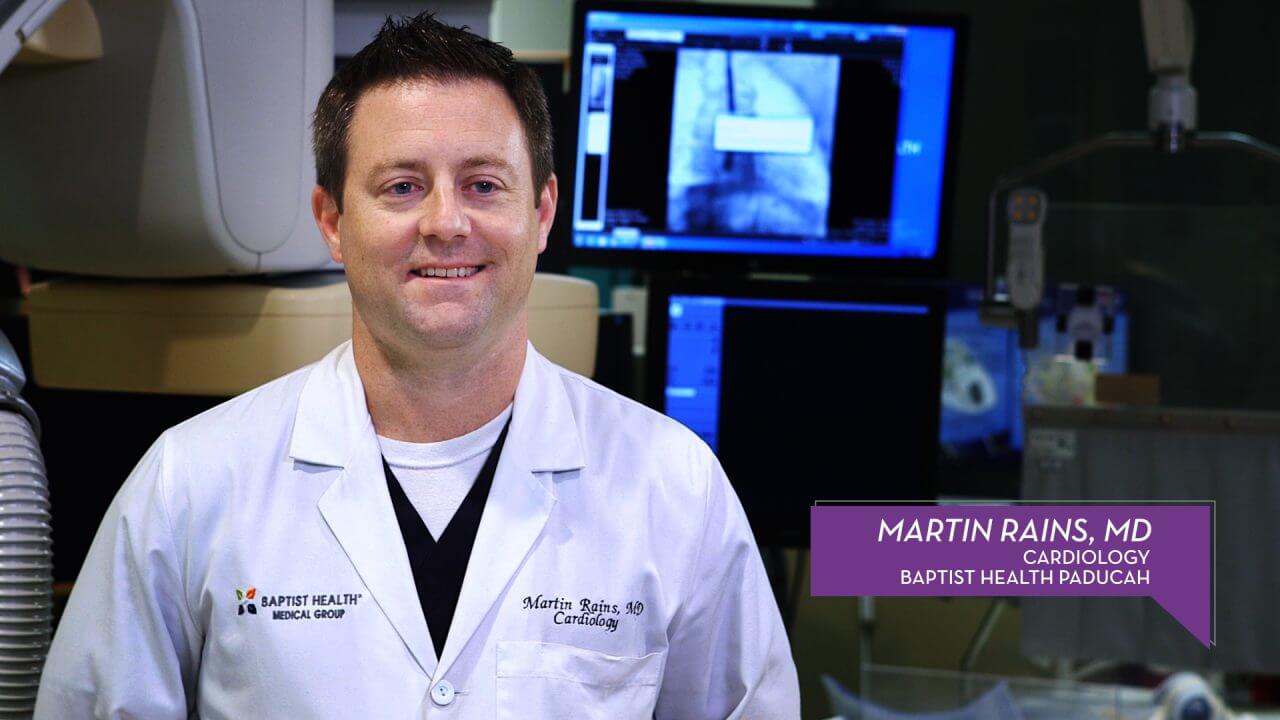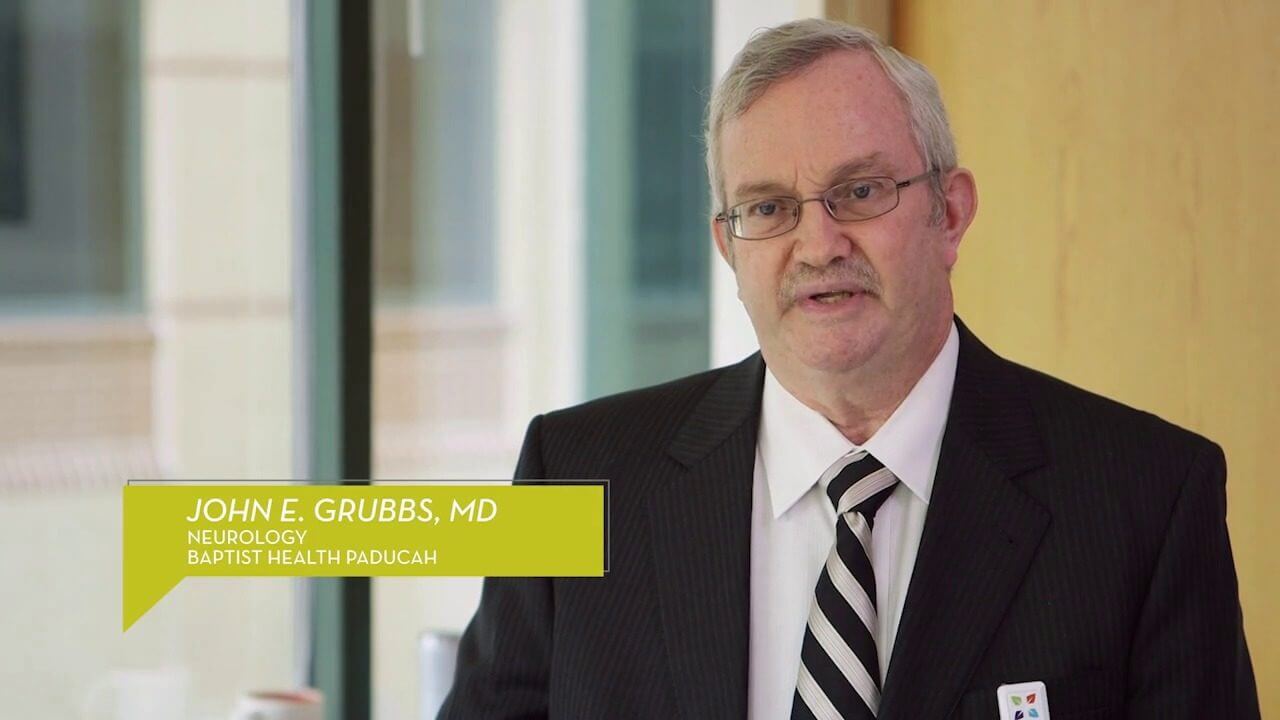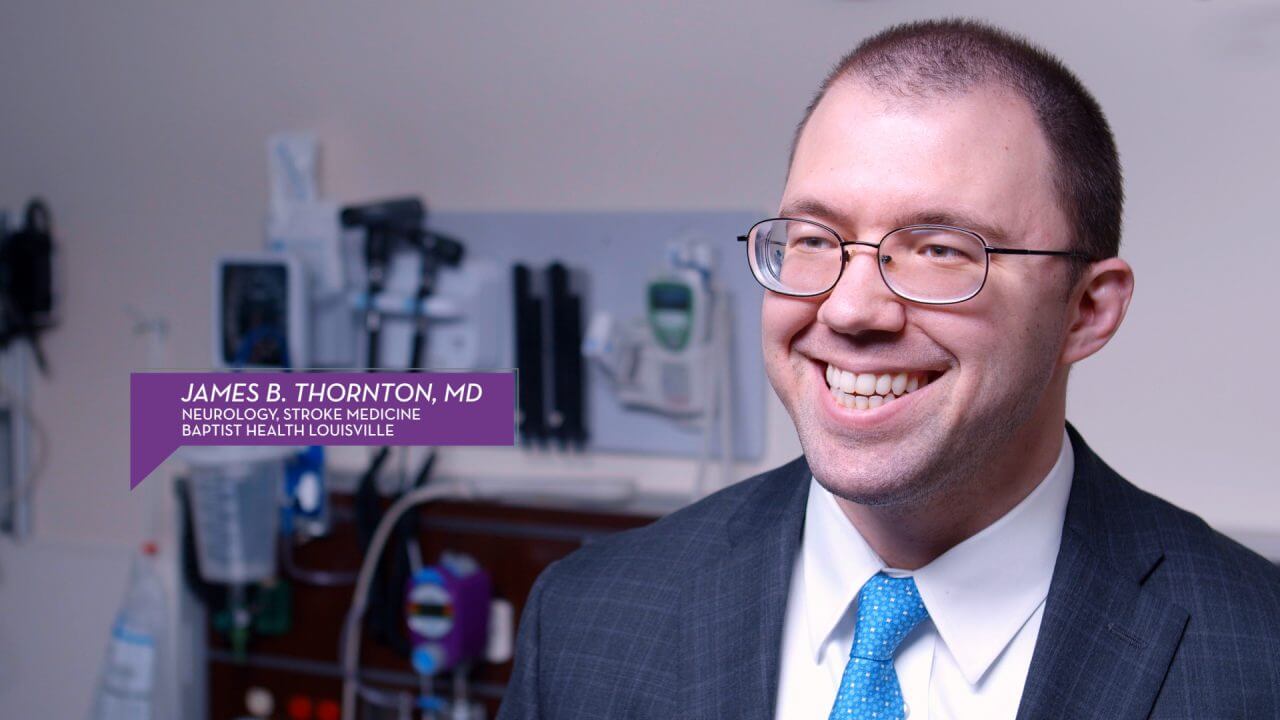Detecting and Treating Strokes
Baptist Health Paducah: Detecting and Treating Strokes
Neurologist JOSEPH ASHBURN, MD explains how clot-busting medication can treat stroke effectively when given within a few hours after the first signs and symptoms arise.
Detecting and Treating Strokes Health Talks Transcript
Joseph C. Ashburn, MD, Neurology:
The signs and symptoms of stroke are many, and the mnemonic that we like to give people is FAST – F-A-S-T. Face is F, if one side of the face is drooping. A is arm, so if an arm and leg are weak on one side compared to the other. S stands for speech, if it’s slurred and they’re not making any sense. Then T stands for time. Time is probably of the utmost importance. What we see so often in the stroke world is someone will start having signs and symptoms of a stroke, and they’ll often think “well if I lay down it will go away,” and by the time they present to us as a stroke center, there is little I can do. And so it’s so important that, when those symptoms first hit, that they seek medical care immediately.
Veronica Hughes:
I just got to feeling a little weird feeling on one side, on the left side. So I just went to the bathroom thinking it was just something I’d get over with, but then everything just started getting numb and tingly, and then all of a sudden I couldn’t even speak. Everything just went blank.
Dr. Ashburn:
TPA is a clot-busting medicine. It was approved by the FDA for people who have strokes. If someone comes in, and their stroke has started within the last three hours or potentially even four and a half then they might be eligible for me to administer that clot-busting medicine to try to at least reverse some of the side effects or improve it a little bit.
Veronica Hughes:
Dr. Ashburn probably saved my life.



